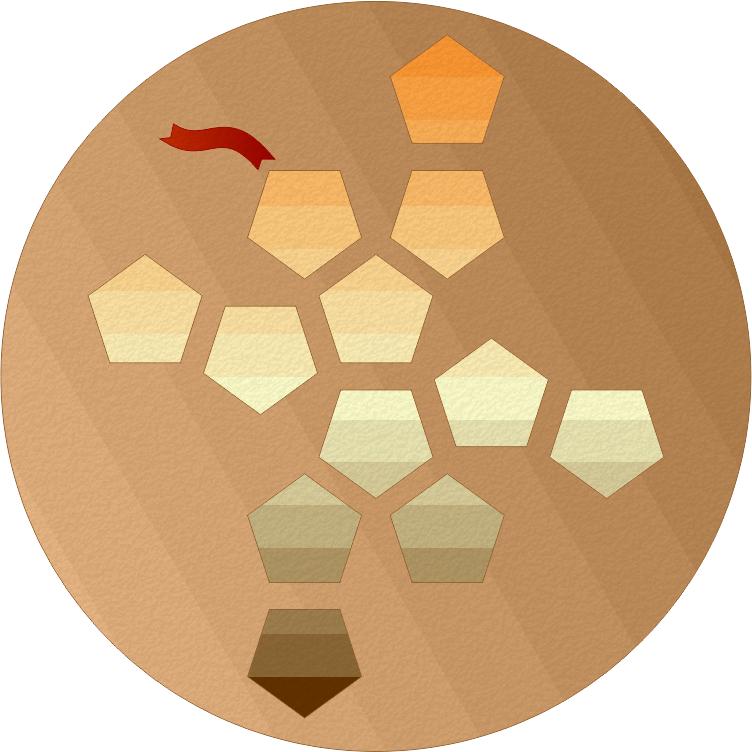Costa Caldera Compound
The Costa Caldera Compound is a series of interconnected structures which, upon completion, had enough rooms for 24 single residents or 48 couples.
Infrastructure
Overall, it appears that the Costa Caldera Compound was designed to operate almost entirely off-grid with regards to utilities.
The compound has built-in plumbing and electrical wiring, but no central air handling or telephone lines. Four wind power generators at the northern end of the property are wired to charge backup batteries placed at their bases, then to the complex to power lights and wall outlets. The compound features a single 1,000 gallon propane tank connected to an electric generator. This size of propane tank is not designed for continuously heating or powering a building of this size, but it could provide some backup power in the event of a becalmed wind.
It appears that the Commune members were also using solar-thermal heating for a variety of purposes. Solar water heater troughs in the backyard provide hot water for cooking and cleaning, though it's unlikely that it would have been adequate for interior heating during the desert winters. Solar baking ovens were also found in the backyard; the residue at the bottom (and scent when the investigators opened them to check) indicates that these were mostly used for cooking vegetables and small game.
Open-topped and decorated with an adobe facade and clay shingle roof, the well at the center of the courtyard was likely the primary source of water for the compound. A spigot located at the base of the visible portion of the well indicates that the water is pressurized with a pump somewhere on-site - most likely powered by the wind generators out back.
There were no hunting licenses recovered at the compound and no records to indicate that any of the residences had them. Several varmint rifles were found on scene, all recently fired and not cleaned afterwards. Did these kids think they were living the cowboy life? Was this make-believe for them? I'd hate to think that this all started because of a failure to grasp the dangerous realities of this here desert. Maybe bellies started going empty, or someone had an accident with one of these guns out of unfamiliarity, or maybe the heat just started going to everyones head. Maybe everyone was too proud to come into town and admit defeat - to their parents, to us rural folks, to God - and let it all come to a simmer under the hot sun. In any case, tensions clearly escalated right quick if what we found in that garden plot is any indication...
Architecture
The walls of the compound are comprised of cinder blocks coated in khaki stucco to simulate adobe construction. Interior spaces other than the greenhouses have 10' ceilings. The rooftops are flat and are covered with reddish clay shingles with the exception of the greenhouses, which are covered with transparent plastic sheeting. The structure itself seems to have been purposefully constructed to emulate the classic mission architecture of the American southwest wherever possible. The county confirms that no permits were issued for such construction, but there are clear signs of a professional touch.
Geography
Costa Caldera, being located in the gulch just beyond the western lip of Kit's Crater, is a typical Great Basin desert location: arid, hot in the summer, and cold in the winter.
Seriously, though, it reallys scuffs my boots that everyone is getting this terminology wrong. First "Crater" and now "Caldera?" It's a subsidence, guys - or a sinkhole, if you're feeling vernacular. Though I do guess that "Kit Carson's Man-Caused Geophysical Subsidence" doesn't exactly roll off the tongue...
Natural Resources
Several chicken coops, a central well, eight garden plots around the perimeter, and greenhouses at the east and west wings of the compound indicate that the residents did make an attempt at self sufficiency in this environment. Still, candybar wrappers and beer cans found near the compost piles in the greenhouses suggest that at least some food must have been brought in from the outside.
The greenhouses contain plots for corn, beans, squash, and amaranth; each also contains small plots for marijuana and rye, the latter of which appears to be specially established for the cultivation of ergot. The exterior gardens were dead by the time investigators arrived, but appear to have been planted with garlic, onions, and alfalfa.
Upon approaching the west-northwest garden plot, Canine Deputy Sparky became visibly agitated. Deputy Sparky is trained to identify buried individuals as a result of his use in search-and-rescue operations involving the local abandoned mine shafts. As such, once the terrain was photographed and documented, the plot was dug up. Twelve distinct sets of human remains were discovered in individual plots concealed beneath the berms of the garden. All twelve bodies were exhumed and sent to the coroner for examination.
Twelve of them. Big Dog found twelve bodies. This is the worst one yet - worse than that minivan I found in the river back home. What the hell did these kids get into?
RUINED SETTLEMENT
1980
Founding Date
1979
Type
Hamlet
Population
20
Inhabitant Demonym
Student(s)
Location under
Owning Organization




Comments